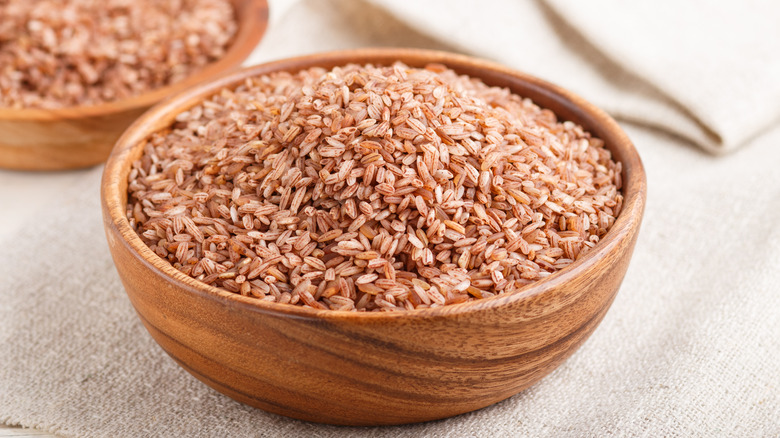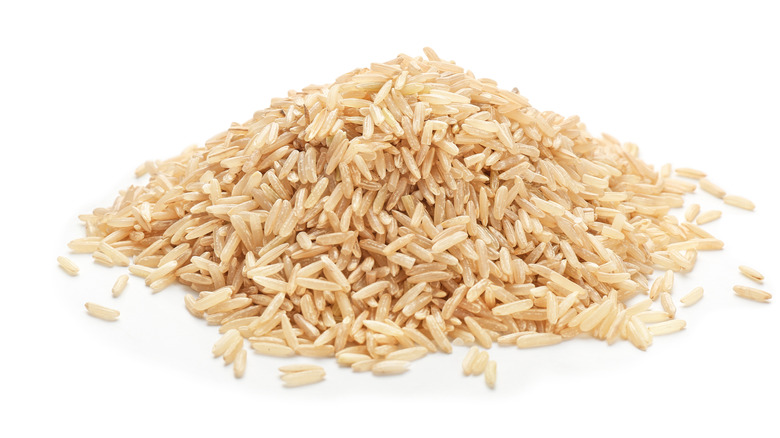The Reason Some Brown Rice Grains Are Green
If you notice a greenish hue on some of the kernels in your brown rice bag, you might be tempted to throw them out, thinking something doesn't look right. That may be the case for a block of soft cheese infected with green mold, but not so with brown rice and other foods. After all, an unripe banana or tomato is green before it matures into its ripened form.
According to Seattle-based food cooperative PCC Community Markets, green grains are actually a "good quality" to look for when shopping for brown rice. Chlorophyll, the green pigment that gives plants their color, is what produces the green appearance of the rice kernels. Similar to the aforementioned green banana and tomato, this just means they haven't matured yet.
As the Mahatma and Carolina rice brands explain on their respective websites, there is no need to panic if you spot green kernels in your whole grain brown rice. It just means that these are "immature kernels of rice" which contain the "same nutritional value as mature grains."
Green means "go"
PCC Community Markets maintains that brown rice without any green kernels is a bad thing because it "means it was gassed to eliminate the chlorophyll." They point out that the green color just means that they were likely harvested from the bottom of the stalk and haven't matured as quickly.
Although in this particular instance green means "go," it doesn't imply that your brown rice is impervious to spoiling. Proper storage in a dry, sealed container that avoids exposure to moisture can help ensure that your brown rice keeps longer, preserves its flavor, and doesn't grow mold. A cool, dry, and dark area such as a pantry or kitchen cupboard are a couple of recommended storage options. Placing brown rice in a fridge or freezer is another way to extend its shelf life.
And once it's time to prepare a meal, consult our guide on how to properly cook your rice on the stove so you can hone your technique.

